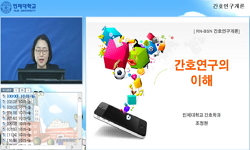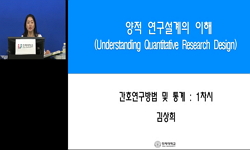이 연구는 포토보이스(Photovoice) 방법을 통해 비대면 대화에 나타나는 한국어 호칭어 사용 양상과 그 의미를 설명하는 데 목적이 있다. 이를 위해 포토보이스의 사진 선택, 맥락화, 부호화와 ...
http://chineseinput.net/에서 pinyin(병음)방식으로 중국어를 변환할 수 있습니다.
변환된 중국어를 복사하여 사용하시면 됩니다.
- 中文 을 입력하시려면 zhongwen을 입력하시고 space를누르시면됩니다.
- 北京 을 입력하시려면 beijing을 입력하시고 space를 누르시면 됩니다.
비대면 대화에서 나타나는 한국어 호칭어에 대한 질적 연구 : (포토보이스(Photovoice) 방법을 활용하여) = A Qualitative study on the Korean Address in non-face-to-face conversations - Utilizing the Photovoice
한글로보기https://www.riss.kr/link?id=E1704042
- 저자
- 발행기관
-
발행연도
2023년
-
작성언어
Korean
- 주제어
-
KDC
810
-
자료형태
dCollection
-
0
상세조회 -
0
다운로드
부가정보
국문 초록 (Abstract)
이 연구는 포토보이스(Photovoice) 방법을 통해 비대면 대화에 나타나는 한국어 호칭어 사용 양상과 그 의미를 설명하는 데 목적이 있다. 이를 위해 포토보이스의 사진 선택, 맥락화, 부호화와 범주화를 통해 비대면 대화 상황에서 어떤 한국어 호칭어를 사용하고, 왜 그러한 호칭어를 사용했는가의 의미를 확인하였다. 질적 연구 방식을 통해 새롭게 확인한 비대면 호칭어의 사용 의미는 다음과 같다. 첫째, 비대면 대화에서는 기존 대면 관습과 관계적 거리와는 다르게 호칭어를 사용하는 모습을 확인하였다. 대면 대화에서 일반적으로 ‘님’은 높임의 의미를 갖지만 비대면 대화 상황에서는 격식성을 낮춘 의미로 친근함을 나타내는 가벼운 호칭어로 사용된다. 둘째, 대면 대화 상황에서는 뚜렷하게 구분되는 관계 질서나 위계가 비대면에서는 관계의 경계를 모호하게 표현하는 것으로 나타난다. 셋째, 비대면 대화에서는 화자가 특별하게 의미를 부여한 호칭어가 사용되는데 장난이나 놀림의 수위가 훨씬 높다. 넷째, 비대면 대화에서는 호격 조사 ‘아/야’를 사용한 호칭 방식에 좀 더 친근함의 의미가 담겨 있다고 생각한다. 본고는 비대면적 관계와 대화가 많아진 변화하는 사회 속에서 사용하는 의미가 점차 달라지고 있는 한국어 호칭어의 의미를 확인하고 비대면 상황에서 사용되는 호칭어의 의미를 재구성하였다는 점에서 의의가 있다.
다국어 초록 (Multilingual Abstract)
The purpose of this study is to explain the use and meaning of Korean address in non-face-to-face conversation through Photovoice method. To this end, through Selecting, Contextualizing, Codifying, and Categorizing of photo voices, the meaning of whic...
The purpose of this study is to explain the use and meaning of Korean address in non-face-to-face conversation through Photovoice method. To this end, through Selecting, Contextualizing, Codifying, and Categorizing of photo voices, the meaning of which Korean address was used in non-face-to-face conversation situations and why such address was used was confirmed. The meanings of the non-face-to-face address newly identified through the qualitative research method are as follows. First, in the non-face-to-face conversation, it was confirmed that the address is used differently from the existing face-to-face custom and the relative distance. In face-to-face conversations, ‘nim(님)’ is usually used in an honorific sense, but in non-face-to-face conversations, it is used as a light address to express friendliness in a less formal way. Second, the order and rank of relationships that are clearly distinguished in face-to-face conversations express the boundaries of relationships indistinctly in non-face-to-face conversations. Third, in non-face-to-face conversations, speakers use addresses that give special meaning, but the level of jokes and ridicule is much higher. Fourth, in non-face-to-face conversation, I think that the calling method using the vocative case marker ‘a/ya’ has a more friendly meaning. This study was significant in that it identifies the meaning of Korean address, which is gradually changing in a changing society with increasing non-face-to-face relationships and conversation, and reconstructs the meaning of the address.
목차 (Table of Contents)
- 1. 서론
- 2. 연구 대상 및 방법
- 3. 비대면 생활과 호칭어 사용 경험
- 4. 비대면 호칭어사용의 의미
- 5. 결론
- 1. 서론
- 2. 연구 대상 및 방법
- 3. 비대면 생활과 호칭어 사용 경험
- 4. 비대면 호칭어사용의 의미
- 5. 결론
- <참고문헌>











